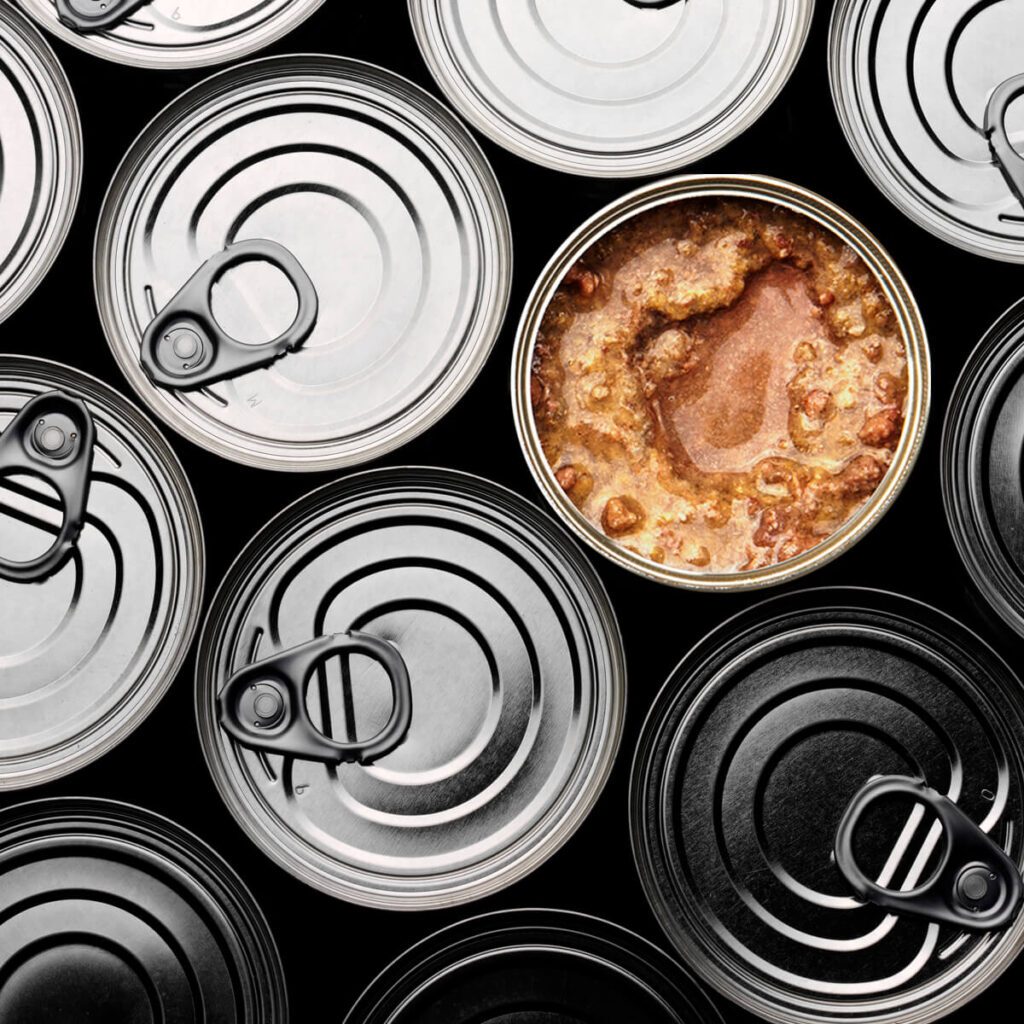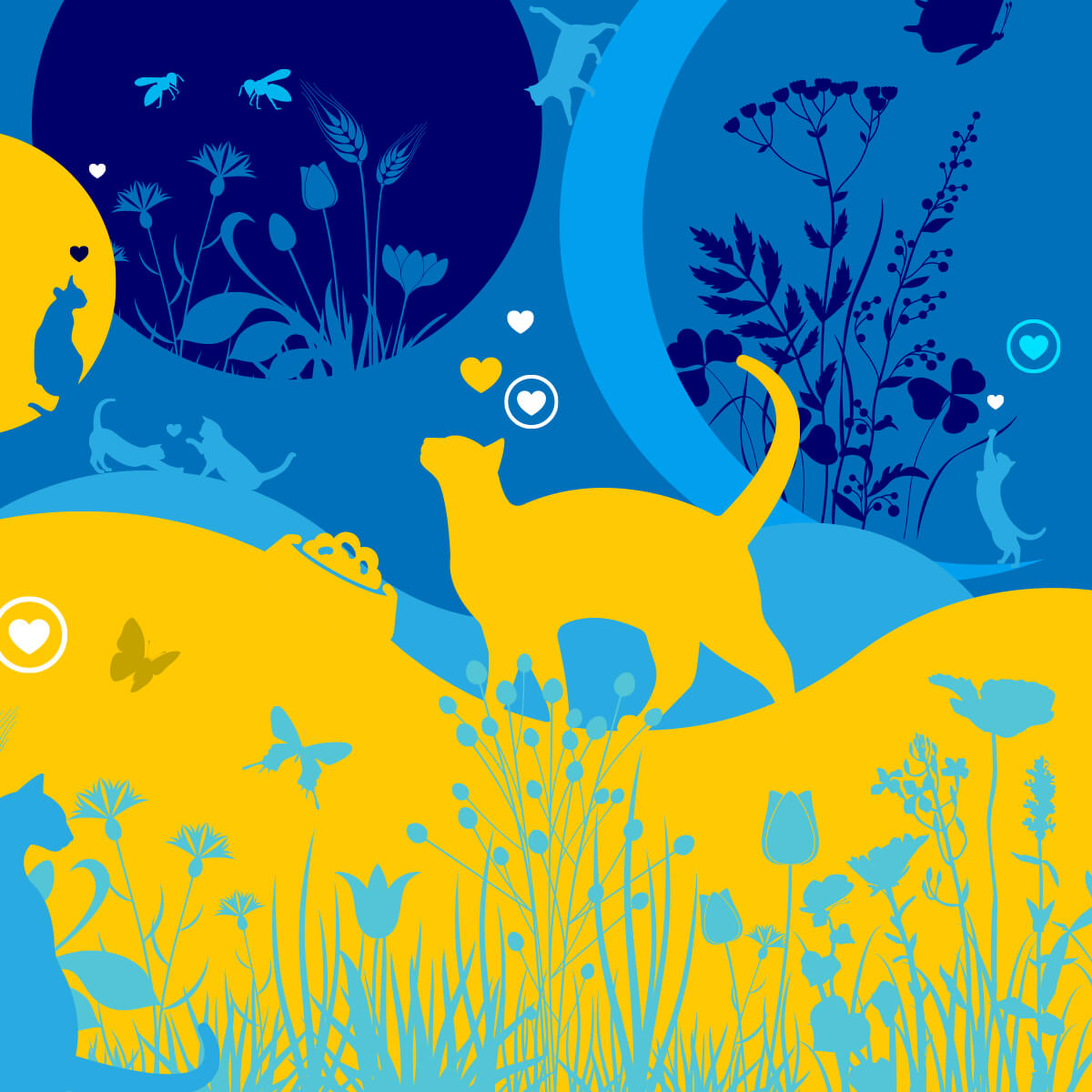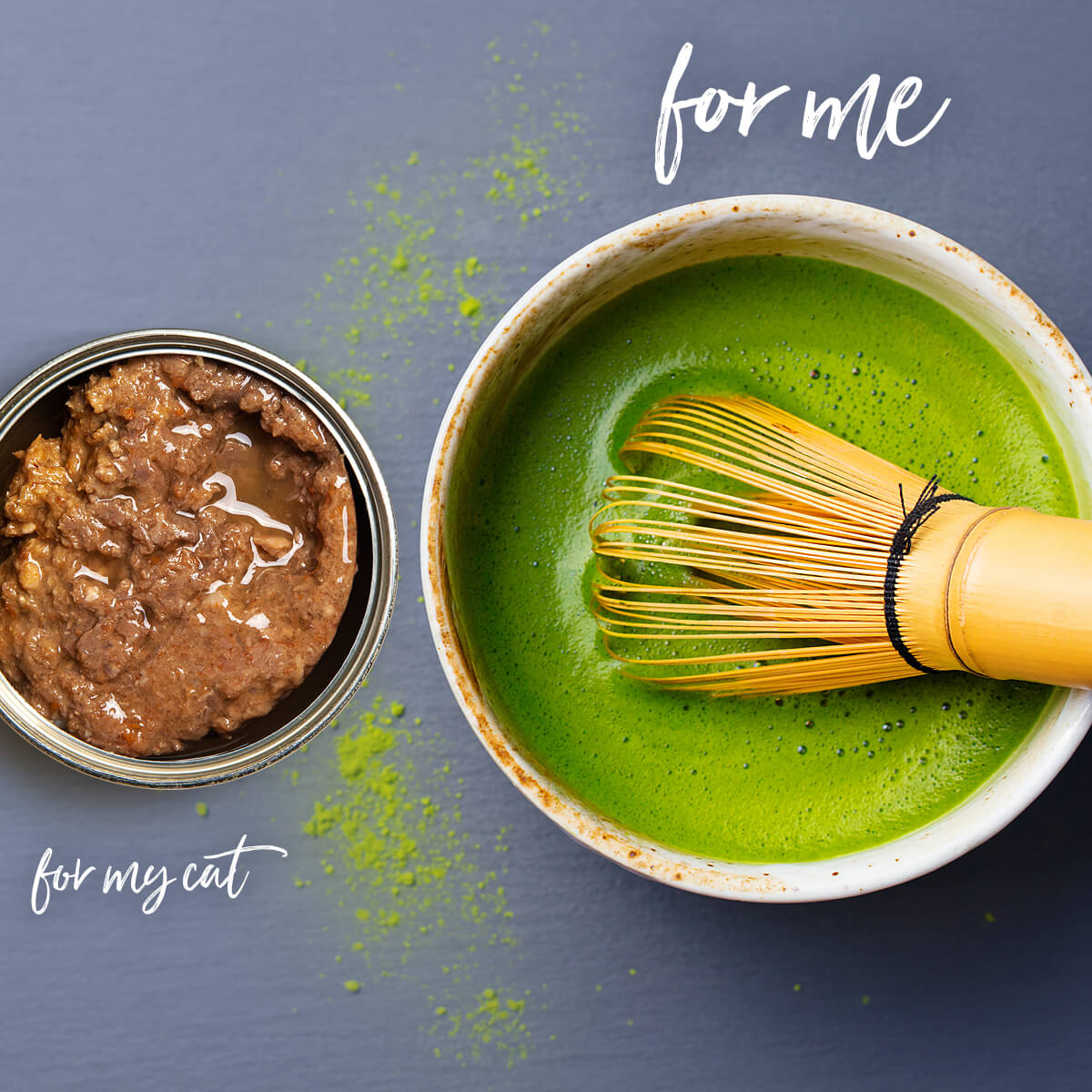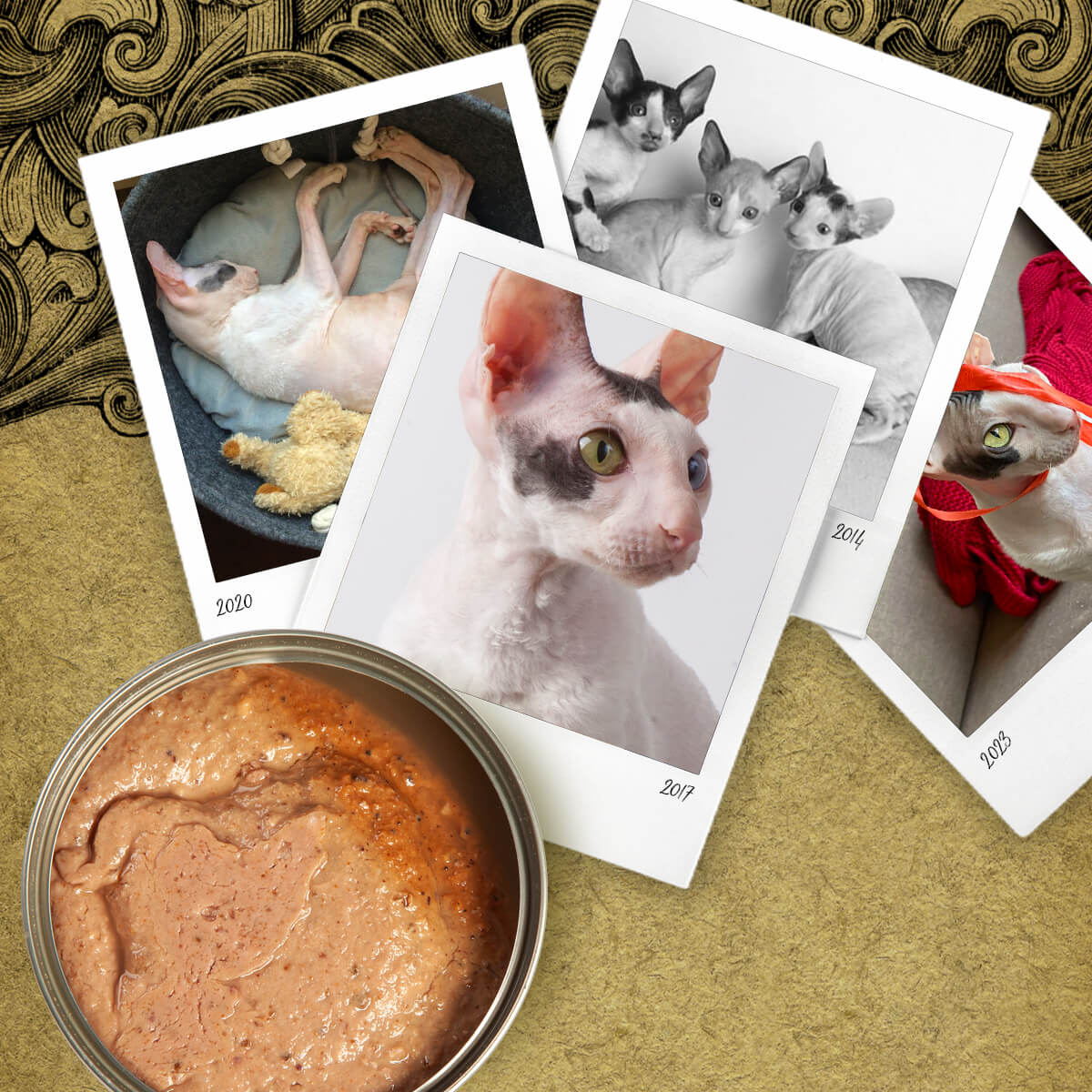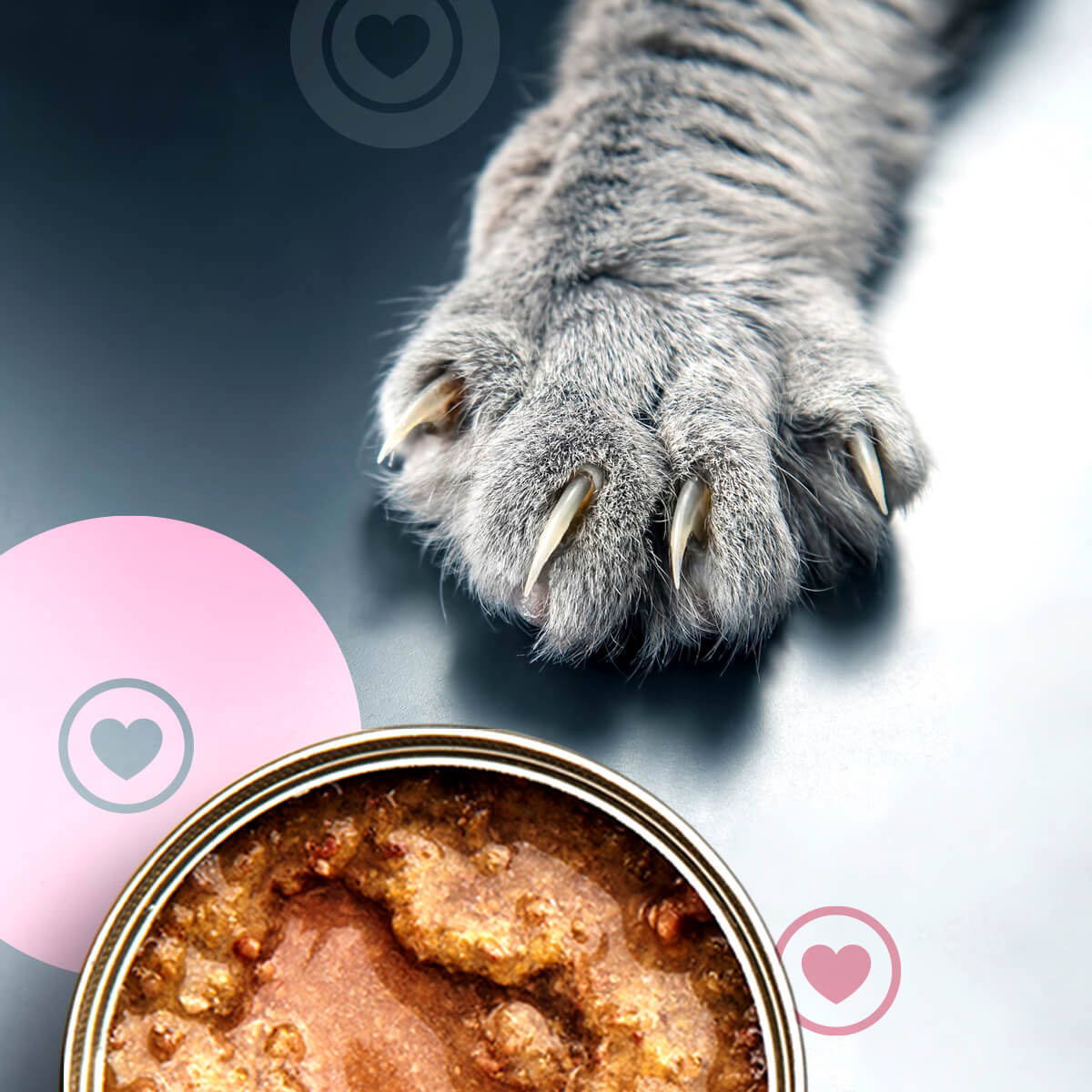Thinking of the environment, one tin at a time
We spend a lot of time talking about our 100% meat wet cat food. We explain why we only put meat in it and hope you share our desire to feed as many cats as possible with the best possible food. To get the food to you, we need to package it in something. We care as much about the packaging we use as we do about the food we make.
There are a number of options available for food packaging. Although we started with glass, we quickly moved away from it as the breakage levels were too high. Instead, we use tins made of tin-plated electro galvanized steel sheet which complies with the EU’s EN10202:2001 standard. Thanks to you and many others, the recycling rate of this kind of tin is 80% within the EU. Increasingly, sheet metal producers have updated their processes to reduce CO2 emissions. This means this kind of packaging is as close to environmental neutrality as possible.
Long-standing customers might have noticed changes to our tins over time: the thickness of both tins and lids and the shape of the tins. New advanced tin production methods mean that the tin itself does not have to be as thick and as heavy to provide the same protection. Environmental regulations aiming for the circular economy have meant that tin manufacturers and product packagers have been working on reducing raw materials and improving the recyclability of tins.
At the moment, we still need to use virgin material rather than the metal which has been recycled. This is because the recycled metals can have small imperfections which can lead to failures of the tins during our sterilization process. In addition, the EU pet food regulations require that only virgin material has contact with pet food. Hopefully, recycling processes will keep developing and one day we can use recycled metal for our tins.
Do you recycle all the tins from your food and that of your cat?
We encourage you to recycle or reuse our tins.
You can find instructions on how to prepare our tins for recycling on our web site. Although regulations are becoming more consistent, the colour and type of bins varies in different countries. You can also clean our large tins and use them. The possibilities are endless, from storing tools, nails and buttons to using them as plant pots. Find out how to recycle our packaging.
Where does the symbol 40 FE come from and what does it mean?
You will soon see the 40 FE symbol on our web site with information about our tins. It is part of a range of codes on packaging aimed at assisting recyclers in sorting collected materials. The letters and numbers inside the triangle identify what material the packaging is made of. The triangle itself is based on the Möbius loop “recycle” symbol. The system started with resins and since the introduction of the first packaging regulation by the EU in 1997 now comprises a wide range of materials. There are seven codes for plastics, three for papers and glass respectively, two each for woods and textiles and two for metals: ALU41 for aluminum and FE40 for steel.
